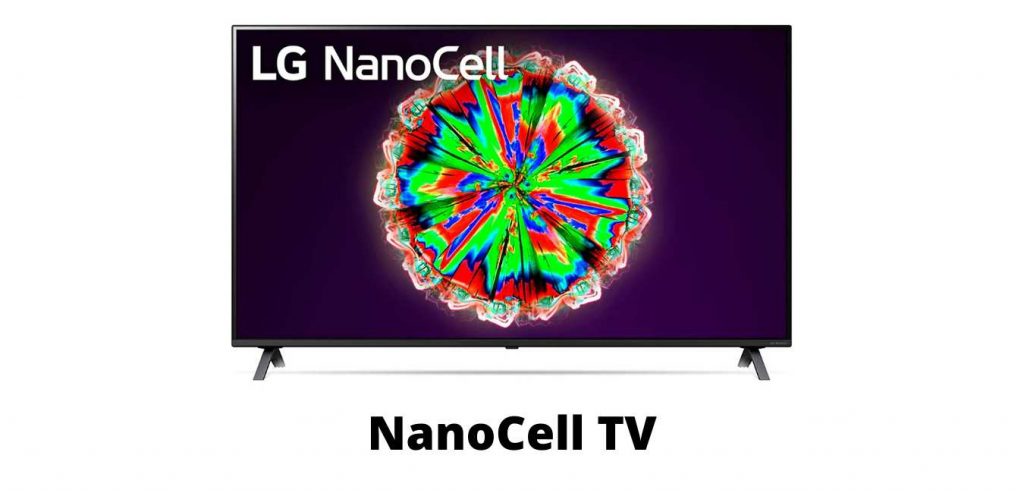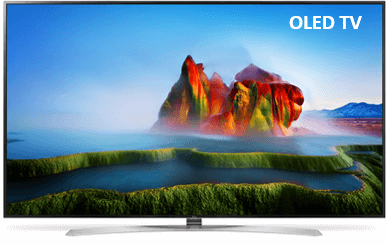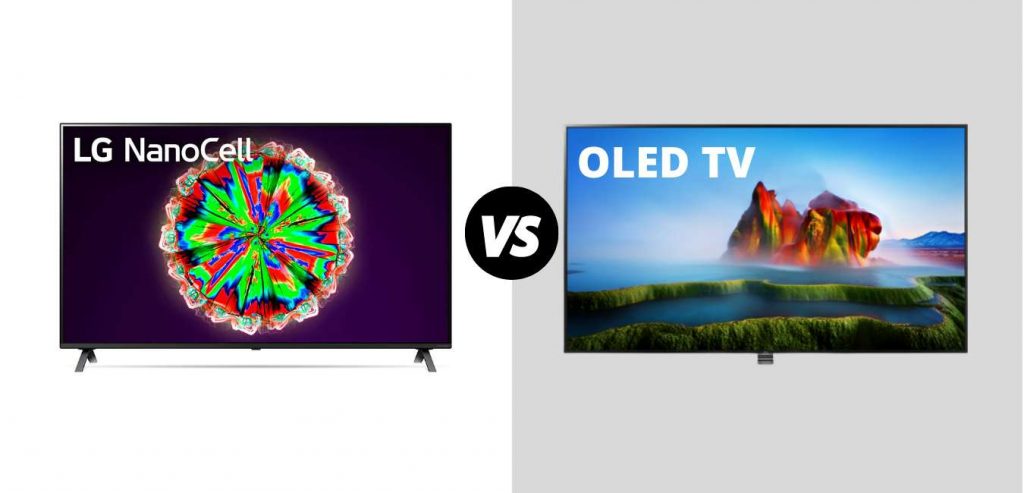Nanocell TV Vs OLED TV is the latest debate in the ‘tech world today. However, the hype is mainly because LG has successfully kept this technology a secret to date. But we can take an analysis of the NancoCell TV technology according to what the experts, professionals, and the users have to say.
As for the gadget-fanatics, the two can get confusing. But how would you know one from the other? And when you do, how would you know what to opt for? Well, this is where ‘we’ step in. Let us take a detailed look at how the NanoCell TV is different from the OLED TV and what makes one better than the other.

Much like its counterpart, the Nanocell TV is quite similar to your basic LED TV. Here, the light source illuminates the panel from behind to brighten an image that is vibrant and then make it available for the viewers. However, the main difference arises ‘as to how the NanoCell TV handles the colours.’ Basically, an extra layer is inserted into the TV in this technology that allows a better viewing experience for the colours that fall on the red and green wavelength. This results in better ‘colour reproduction due to the ‘smart handling’ of the colours as they emerge from the TV. For a better understanding; one may know that the Naknowl TV can ‘filter out’ the Reds and the Greens’ better than their counterparts.
Advantages of Nanocell TV
- There is never a ‘bad seat’ when viewing the NanoCell TV. As the technology utilizes the ‘Nano-particles’ to absorb the unwanted light wavelengths, thus the purity of the resulting image is further enhanced. Also, the ‘true colours’ as a result are more subtle at any viewing angle.
- The NanoCell TV technology display supports over 1 Billion colours. This way, there is less ‘colour bleed.’ Thus better colour and narrow bands are created, offering an overall good viewing experience.
- The Wide Viewing Angle by utilizing the In-Plane Switching (IPS) Liquid Crystal Display (LCD) is applied by this technology. This results in increased viewing angles and reduced colour distortion. The main process involves holding the liquid crystals parallel to the screen orientations, thus making it appear that the colours emerging are uniform.
- These are the revolutionary 8K TVs with 7,680 by 4,320 pixels, thus resulting in images that comprise 33 million pixels.
Disadvantages of Nanocell TV
- This is a relatively new technology, and users are yet to discover its virtues.
- Some experts believe that the technology and its application are not entirely ‘true’ to the users.
- According to the experts, the same results can be achieved by the application of ‘narrowband emitters,’ thus bringing down the size of the production Plenti folds.
Also Read: Best LED TV in India
What is a OLED TV?

The Organic Light Emitting diode or the OLED is a display technology used by top tech brands like LG, Sony, and more. This technology utilizes the application of thin Carbon-based film that is built-in to the screen. This way, only those parts are illuminated that require lightening, while the other parts are ‘tuned off. This way, the Black levels are intensified.
Advantages of OLED TV
- The quality of the picture is good. This is mainly because every pixel on OLED emits its light. This way, the images are vibrant with more in-depth colour ranges as the technology adds White light above the regular Red, Blue, Green.
- The OLED TV is more energy-efficient, as they do not light up the entire display when turned ON.
- As the technology does not include the backlight, the design is thin, as compared to LCD, LED TVs.
- The OLED Tv can last up to 100000 hours! Making them one of the most long-lasting options.
Disadvantages of OLED TV
- It is an expensive investment for a single TV.
Also Read: Best 32 inch LED TV
Nanocell TV Vs OLED TV: Comparison Between Nanocel TV and OLED TV

There are differences between the two leading TV technologies. Let us take a look at some of the more precise one’s:
NanoCell TV | OLED TV |
The Display type is: LED-LCD type | The Display type is OLED |
The Screen Thickness is: 35.56 mm | Screen thickness is 3.85 mm |
Dimming: Greyish and bleeding | Dimming: Perfectly black |
Contrasts: Is Low | Contrasts: Infinite |
Response time: 10 ms | Response time: 1.7 ms |
Viewing Angle: 30 Degrees | Viewing Angle: 60 degrees |
The color accuracy is Excellent | The color accuracy is also Excellent |
No Burn-in risks | High burn-in risks |
The price range is Mid to high | The price range is high |
Also Read: Best PS4 Games
Nanocell TV Vs OLED TV: The Conclusion
The Consumer Electronics Show in Las Vegas in the year 2019 was all about the latest NanoCell technology by the LG. Even though the brand has kept the ‘exact workings’ of the technology somewhat of a secret, the experts have ‘found their way.’ This 8K TV was all over the place and managed to grab the headlines soon enough. However, their mass acceptance is nowhere on the horizon anytime soon. Much like the 4K TV that was launched in the year 2013, but it was not before five years later that the surge in its demand was observed.
The 4K is Still Out and About: There is no denying the fact that 4K has its consumer base that is very much loyal. Not to forget that technology is used widely in the movie-making business. With the shows being increasingly shot in 4 K has seen a rise; this has only led to the increase in the demand for OLED TVs. Not just that, the OLED TV is also preferred by the Gamers out there. With the variable refresh rate, the gamers find the OLED TV type perfect for the adventure sequence that the thrill of the game offers. However, one cannot ignore the difference between Nanocell Tv and OLED TV.
The Final Note: There are big plans for the NanoCell TV to make its huge impact during the Olympic Games that are to be hosted in Tokyo 2021. The TV broadcasters are ready to launch the 8K networks across Pan Asia, and there is no question about the fact that it is the new future. Also, Hollywood has taken the latest plunge into the tech, with Marvels’ Guardian’s of the Galaxy Vol.2 to be shot entirely on 8K. So, the near future is going to see a lot of 8K content around, with the tech market ready for the latest transition.